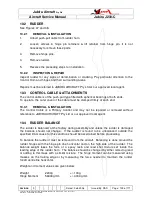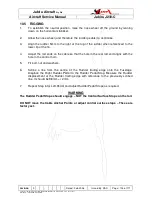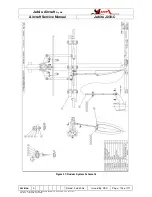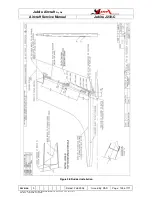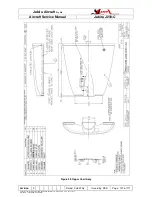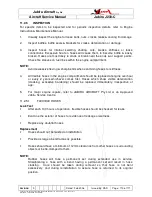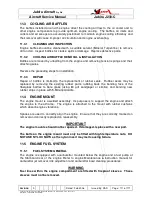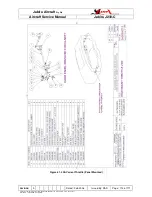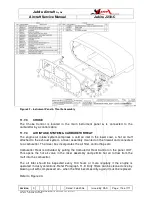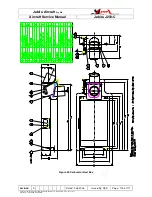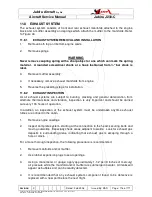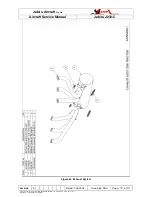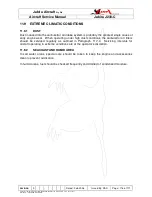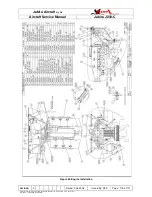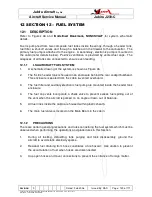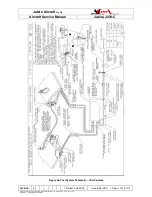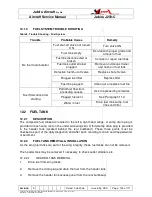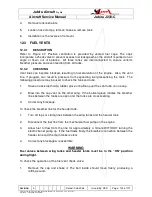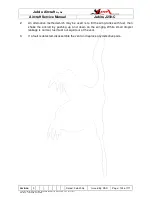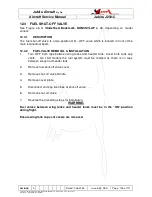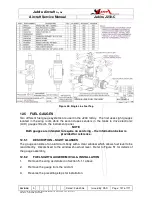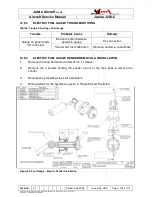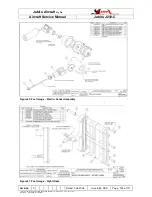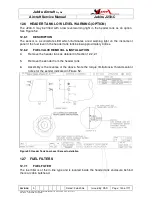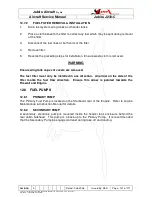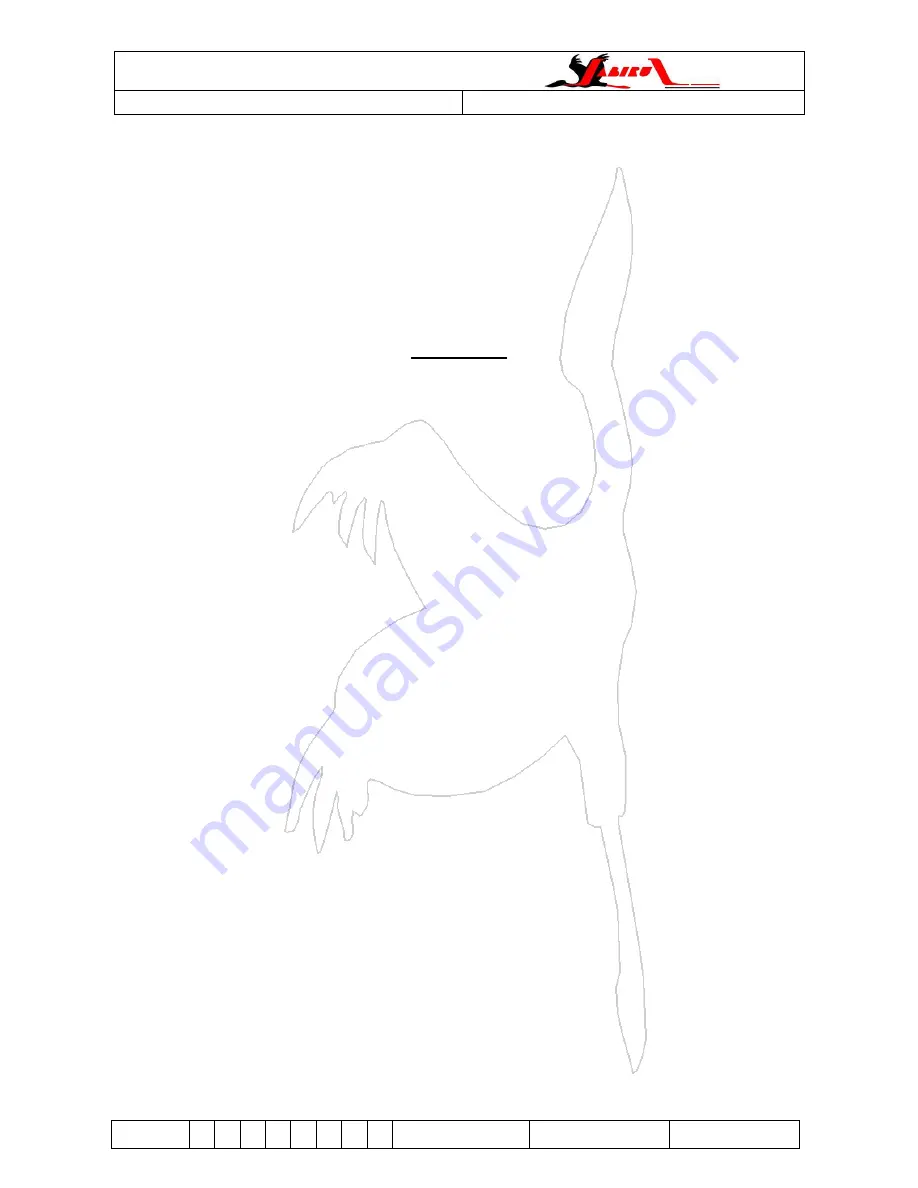
Jabiru Aircraft
Pty Ptd
Aircraft Service Manual
Jabiru J230-C
REVISION
0
Dated : Feb 2006
Issued By: RAS
Page: 116 of 171
L:\files\Technical_manuals\J230_J430\J230.J430_Work_files\J230-C_Tech_Rev_1.doc
Print Date: 14/01/2009 4:41:00 PM
11.8 EXHAUST SYSTEM
The exhaust system consists of front and rear exhaust manifolds attached to the engine
block and a muffler assembly and springs which attach the muffler to the manifolds. Refer
to Figure 44
11.8.1
EXHAUST SYSTEM REMOVAL AND INSTALLATION
1.
Remove both top and bottom engine cowls.
2.
Remove springs.
WARNING
Never remove coupling spring with a sharp object or one which can mark the spring
material. A rounded screwdriver shank or a hook fashioned from ¼" bar stock is
ideal.
3.
Remove muffler assembly.
4.
If necessary, remove exhaust manifolds from engine.
5.
Reverse the preceding steps for installation.
11.8.2
EXHAUST INSPECTION
As all exhaust systems are subject to burning, cracking and general deterioration from
alternate thermal stress and vibration, inspection is very important and should be carried
out every 100 hours of operation.
In addition, an inspection of the exhaust system must be undertaken anytime exhaust
fumes are noticed in the cabin.
1.
Remove engine cowlings.
2.
Inspect complete system, starting at the connection to the head; securing bolts and
moving outwards. Especially check areas adjacent to welds. Look for exhaust gas
deposits in surrounding areas, indicating that exhaust gas is escaping through a
hole or crack.
For a more thorough inspection, the following procedure is recommended.
1.
Remove manifolds and/or muffler.
2.
Use rubber expansion plugs to seal openings.
3.
Using a manometer or gauge, apply approximately 1-1/2 psi (3 inches of mercury)
air pressure while the manifold and/or muffler are submerged in water. All leaks will
appear as bubbles and can be readily detected.
4.
It is recommended that any exhaust system component found to be defective is
replaced with a new part before the next flight.

